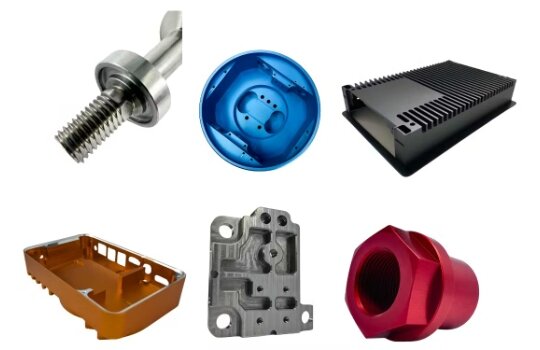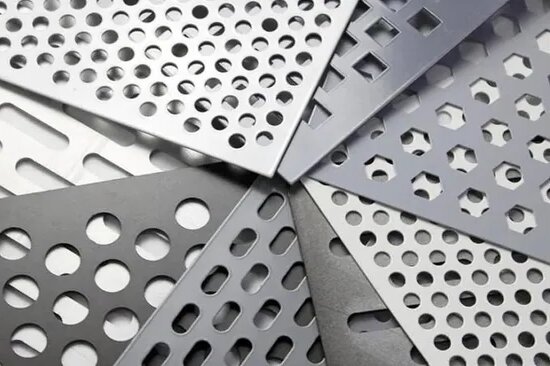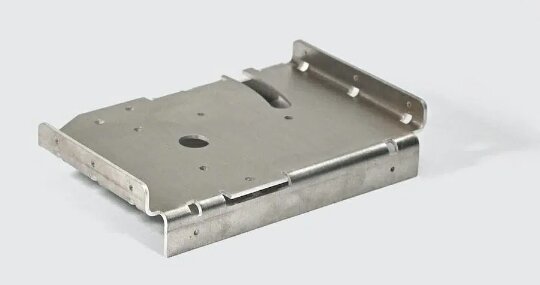Choosing the proper enclosure process is one of the most critical decisions in any electronic or industrial product. When problems appear in the field, they rarely arrive as dramatic failures. Most start small—a light leak around a gasket, a connector that sits slightly off, or a housing that twists when it is bolted in place. In many cases, the real problem is that the enclosure process does not meet the design requirements.
For most projects, the practical choices come down to three types of enclosures: die-cast, sheet metal, and CNC-machined. Each one can produce strong, reliable parts, but each behaves differently in precision, durability, thermal performance, cost structure, and scalability. There is no single “best” option. The correct answer depends on your environment, geometry, volume, and lifecycle.
This article gives you a straightforward way to make that choice. It starts with a simple decision framework, then walks through each process in detail, and ends with a side-by-side comparison and a practical guide. The goal is to help you choose the method that best fits your project’s real needs, rather than simply following what has been done before.
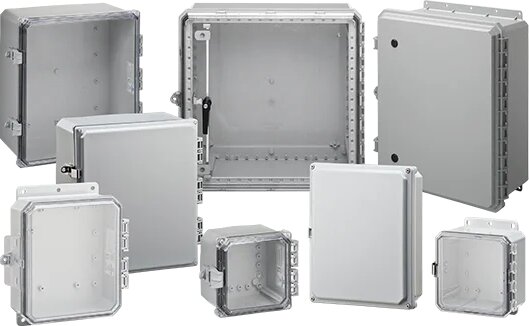
A Simple Framework for Choosing an Enclosure Process
Before reviewing datasheets or requesting quotes, it’s helpful to pause and ask four simple questions about your project. These questions guide most of the decision-making and quickly point you toward the proper enclosure process.
Project environment and loads
Start by considering where the product resides and what it experiences during its lifecycle. A benchtop data logger, an outdoor communication unit, and a motor controller on a vibrating machine all face very different conditions.
Think through a few points:
- Whether the product stays indoors, sits on a factory floor, rides in a vehicle, or stays entirely outdoors
- How much rain, washdown, dust, mud, salt, or chemicals it may face
- How strong the vibration and shock levels are, including during shipping
- The whole temperature range and how often it cycles
If you expect heavy impacts, rough handling, or prolonged outdoor exposure, you may want a solid body, such as a die-cast enclosure or a thick CNC housing. If the use is moderate and the environment remains controlled, sheet metal usually provides sufficient protection while offering more flexibility in terms of cost and shape.
You also need to be clear about sealing and standards. If you aim for higher IP ratings, require good shielding, or need to pass industry tests, this choice affects how continuous the enclosure must be and how many seams you can include.
Geometry and tolerance needs
Next, examine the shape of your enclosure and consider how precise it needs to be. The process you choose should match your geometry without creating constant problems.
Think through these points:
- Whether the enclosure is mainly flat panels and bends, or if it includes deep pockets and complex 3D shapes
- How close holes and cutouts sit to edges and bend lines
- What minimum wall thickness and corner radii can you accept
- Which faces and holes are truly critical, and what tolerances do they need
If you can create most of the enclosure from a flat pattern with a reasonable number of bends, sheet metal is a suitable material. It handles panels, flanges, and practical cutouts with good speed and low cost.
If you need deep cavities for connectors, accurate sealing grooves, or 3D surfaces that guide alignment or fluid flow, CNC machining is often the better fit. It delivers tight tolerances and complex geometry with high repeatability.
If you want a single solid shell with ribs, bosses, and cover lands formed in one piece, diecasting is usually the only realistic option at scale. The tradeoff is that you must follow casting rules for draft, wall thickness, and part layout.
Production volume and design lifecycle
Now, consider how many units you plan to produce and how stable your design is. This is where the cost differences between processes become readily apparent.
You can group most products into a few stages:
- Prototypes and engineering builds: 1–50 units
- Pilot and early customer runs: tens to a few hundred units
- Mature production: hundreds to many thousands per year
CNC machining fits well in the first two stages. It requires almost no tooling, supports complex shapes, and enables rapid design changes without locking money into hard-to-change tools.
Sheet metal works across a wide range of applications. It supports small batches during early builds and can scale into mid-volume production. As nests improve and setups stay consistent, the cost per unit drops.
Diecasting sits on the other side. The die is expensive to build, but once it is ready, the cycle time is fast and the repeatability is strong. It becomes a good choice when your design is stable and your total volume reaches the thousands or tens of thousands.
Budget, supply chain, and lead time
The last step is to connect your enclosure choice to cost and timing. Each process can meet your needs, but each one puts pressure on your project in a different way.
You should be clear on a few points:
- How much can you spend upfront on tooling, fixtures, and NRE
- What unit price do you need at your expected volume levels
- Whether you prefer local production or feel comfortable working with remote suppliers
- How fast do you need the first articles, and when must steady production start
CNC machining and sheet metal both work well when a fast turnaround is required. They rely on programming and standard tools, allowing you to obtain genuine parts quickly and adjust the design with minimal delay.
Diecasting moves at a different pace. The tooling requires more time and is more expensive to build, but once the die is ready, the cost per part can decrease significantly. This balance makes die casting a strong choice when you need low unit prices at high volumes.
Diecast Enclosures
Fundição sob pressão forms an enclosure by pushing molten metal into a steel mold under pressure. The metal fills the cavity, cools, and hardens. The die then opens, and the part emerges as a single, solid piece. For enclosure projects, the casting typically includes the walls, ribs, mounting bosses, and sometimes heat fins, all integrated into a single body.
Most parts still need light machining on essential surfaces. This step cleans up gasket areas, connector openings, and mounting points. The combination of casting and targeted machining yields a rigid, one-piece shell with precisely controlled surfaces where accuracy is crucial.
The most common alloys are aluminum and zinc. The wall thickness for small and mid-size housings typically ranges from 1.5 mm to 4.0 mm. Designers use ribs to increase stiffness without adding too much weight or bulk.
Prós
- Ruggedness: High stiffness and impact resistance, because walls, ribs, and bosses are formed as one solid body.
- Sealing performance: Fewer long seams and joints, with the ability to design vast, flat gasket lands for higher IP ratings.
- Harsh-environment capability: Well-suited to outdoor, vehicle, and industrial applications with vibration, shock, and temperature cycling.
- Thermal management: Aluminum die-cast housings can act as both heat spreaders and heat sinks when fins and ribs are incorporated into their design.
- Repeatability: Very consistent dimensions are achieved once the die is tuned, which supports stable assembly and interchangeable parts at high volumes.
Contras
- Tooling cost: A significant upfront investment in the die, which can be challenging to justify for low-volume or frequently changing designs.
- Startup lead time: Longer initial schedule to design, manufacture, and debug the mold before you can ramp production.
- Design constraints: The geometry must adhere to casting rules, including draft angles, uniform wall thickness, and controlled flow paths.
- Change penalty: Major design changes after tooling is built are slow and expensive, especially if they affect core cavity geometry.
When does diecast make sense?
Diecast enclosures work well when three things line up. The environment is challenging. The structure needs high stiffness and strength. The design remains stable at high volumes. Outdoor power units, vehicle electronics, heavy-equipment controllers, and field boxes for industrial networks often meet these conditions.
If you plan to build thousands of units each year and expect the housing shape to remain the same, die casting is worth serious consideration. If the layout is still changing or you are testing different versions, it is better to treat die casting as a future step and use an alternative process while the design is finalized.
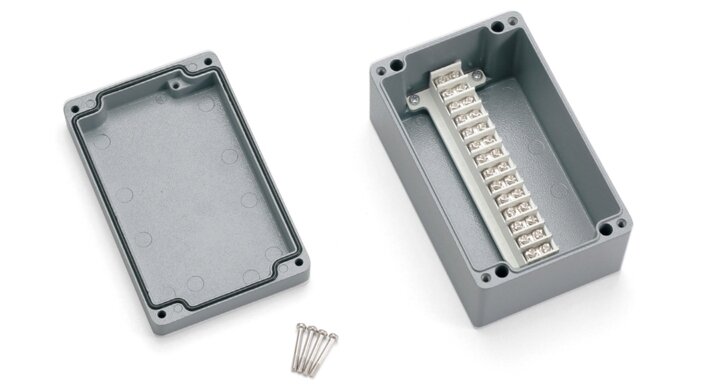
Gabinetes de chapa metálica
Sheet metal enclosures begin as flat sheet stock. Cutting processes, such as laser cutting or punching, shape the flat profile into a desired form. Bending then forms the flanges and walls. Welding or fasteners close the corners and seams. Hardware insertion involves adding studs, nuts, and standoffs wherever you require mounting points.
A finished enclosure usually combines a main chassis or frame with one or more covers or doors. It may also include internal brackets, rails, or mounting plates. Because the equipment is general-purpose, you can update cutouts, bend lines, and hardware locations with simple design changes.
This flexibility makes sheet metal a strong choice when your product has custom shapes, several variants, or ongoing revisions throughout its life.
Prós
- Design flexibility: Effortless to customize sizes, cutouts, and mounting features by changing the flat pattern and bend details.
- Low tooling investment: Relies mainly on standard punches, laser cutting, and common bending tools, so the upfront cost is modest.
- Volume range: Works well from one-off prototypes through low- to mid-volume production without requiring changes to the basic process.
- Strength-to-weight: Uses bends, flanges, hems, and stiffening features to make relatively thin panels rigid and structurally efficient.
Contras
- 3D geometry limits: Not well suited to deep cavities or complex 3D shapes, since it is fundamentally a flat-sheet-plus-bending process.
- Sealing complexity: Welded seams, corner joints, and overlaps can create leak paths, so high-IP designs require careful joint and gasket engineering.
- Distortion risk: Large, thin panels can warp due to cutting, bending, and welding stresses, which may require extra stiffening or fixturing.
- Tolerance control: Formed dimensions are generally less precise than CNC machined features, and bend stack-ups must be managed.
Where does sheet metal fit best?
Sheet metal works well for electrical cabinets, control panels, test equipment enclosures, machine covers, racks, and general industrial housings. These products rely on panels, flanges, and brackets, often incorporating cutouts and mounting features that can be easily handled by laser cutting and bending.
Sheet metal is also a good choice when your design is likely to change over time. If you plan to develop several models with different front panels or expect customers to request new connector layouts or internal modifications, sheet metal allows for quick adaptation. You can update cutouts and features without major retooling, which keeps both cost and lead time under control.
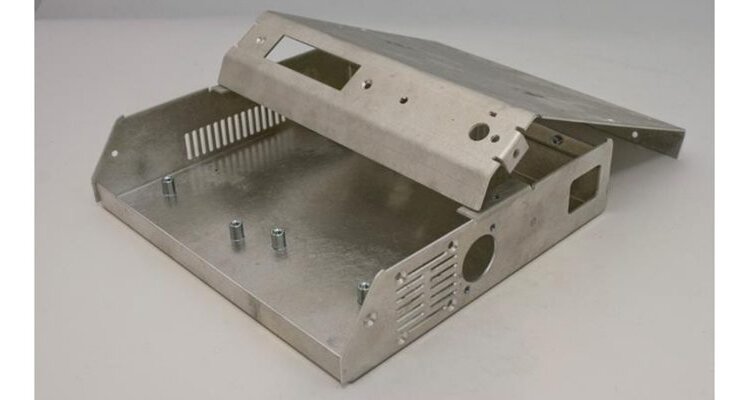
CNC Machined Enclosures
Maquinação CNC begins with solid stock and removes material until the enclosure reaches its final shape. Milling forms the outer faces, pockets, and contours of the part. Drilling and tapping create holes and threads. Multi-axis machines enable you to reach multiple sides and produce more complex features in a single setup.
You can machine enclosures from aluminum, stainless steel, copper alloys, titanium, and many plastics. This range offers strong flexibility when you require specific thermal, mechanical, or electrical performance from the housing itself.
Since everything runs from a digital program, design changes only require updates to tool paths and setups. You do not need to change any physical tooling. This gives CNC machining a distinctly different character compared to die casting.
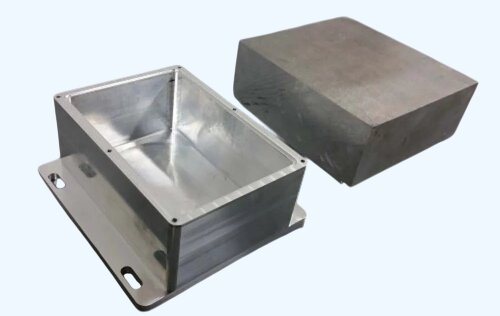
Prós
- Precisão: Delivers the tightest tolerances, ideal for sealing lands, critical fits, and alignment features that control performance.
- Geometric freedom: Handles deep pockets, internal channels, blended surfaces, and complex 3D forms that other processes struggle with.
- Estética: Offers excellent surface quality and a premium appearance when paired with consistent edge breaks and suitable finishes.
- Material flexibility: Works with a wide range of metals and engineering plastics, allowing you to tune mechanical, thermal, and EMC behavior.
- No complex tooling: It requires no dedicated molds, making it ideal for prototypes, engineering builds, and designs that are still in development.
Contras
- Unit cost: Usually the most expensive option per part, especially for complex or large designs that require long cycle times.
- Material and time waste: Deep cavities and thin walls increase chip volume and machining time, which drives cost upward.
- Scaling limits: Does not scale as efficiently as forming processes at very high volume, since each enclosure still needs machine time.
- Thin-wall challenges: Large, thin-walled parts are more difficult to maintain flat and vibration-free, often necessitating additional fixturing and process adjustments.
Ideal applications for CNC enclosures
CNC machined housings are often found in high-end audio gear, cameras, premium consumer devices, medical and laboratory equipment, aerospace modules, and any system that requires precise features and a refined, premium finish. These products rely on tight tolerances, clean surfaces, and detailed geometry that machining handles very well.
CNC is also a strong choice for functional prototypes and early production runs. It lets you test the design with the same geometry you plan to use later in the product’s life. Even if you plan to move to sheet metal or die-cast for volume production, building the first units with CNC is a dependable way to uncover mechanical or thermal issues before committing to long-term tooling.
Here is a quick view of how the three processes compare on the main dimensions that usually drive enclosure decisions:
| Dimension | Diecast Enclosure | Invólucro de chapa metálica | CNC Machined Enclosure |
|---|---|---|---|
| Estrutura de custos | High tooling, low unit cost at high volume | Low tooling, stable unit cost from low to mid volume | Very low tooling, higher unit cost, sensitive to complexity |
| Geometria | Good for solid shells with ribs and bosses, limited by draft and wall rules | Best for panels, bends, and box shapes; limited for deep 3D cavities | Excellent for deep pockets, complex internals, and 3D surfaces |
| Strength & durability | High stiffness, impact and vibration resistance | Good stiffness with proper bends and flanges | High, driven by material and section design |
| Environmental resistance | Very suitable for harsh outdoor and industrial use | Good with careful seam and gasket design | High when sealing and materials are chosen well |
| Thermal behavior | Good heat spreading and capacity with fins and mass | Depends on material; often needs added heat paths | Very good conduction and spreading through solid material |
| Estética | Smooth shell with integrated features | Clean but more “industrial”, folds and seams are visible | Very high, premium look with controlled edges and finishes |
| Material options | Mostly aluminum and zinc alloys | Steel, stainless steel, aluminum and other sheet metals | Wide range of metals and plastics |
| Lead time profile | Longer up front for tooling, short cycles in production | Short setup, fast to first parts, then steady lead times | Short for prototypes and small runs; depends on part complexity |
| Volume suitability | Best for thousands of units and long runs | Best from prototypes to mid-volume production | Best for prototypes and low-to-moderate production |
How to Choose the Right Process?
You can turn all of this into a simple mental checklist.
- If your enclosure will live in a harsh environment, it needs to be very robust. If you plan to build thousands of units of a stable design, die-cast should be on your short list.
- Suppose your design is based on panels and bends. In that case, you expect ongoing tweaks or multiple variants, and your volume lives between prototypes and a few thousand units; sheet metal is usually the default choice.
- If you require tight tolerances, complex internal features, or a premium, visible housing, and your volumes are modest, CNC machining is often the ideal tool.
In practice, many products use a mix. You might pair a sheet metal chassis with a machined end plate for precise connectors, or start with a CNC housing for early runs and transition to die-cast once the design is finalized and volume increases. Thinking in these stages can help save money and reduce risk throughout the product’s life cycle.
Conclusão
Enclosure type is a core engineering decision. It affects how well the product protects the electronics, how easy it is to assemble and service, what your cost curve looks like, and how your brand feels in the user’s hand. Treating it as “just a box” is an easy way to create problems that appear later on the production floor or in the field.
A more effective approach is to examine the environment, geometry, volume, and budget in a structured manner. Then you can compare one or two realistic versions of your enclosure for each process. Once you place those options on the table, it becomes much easier to show the tradeoffs to your team.
Should we use sheet metal, CNC machining, or die casting? Share your drawings or models, and our engineering team will prepare a practical, manufacturing-ready recommendation.
Olá, chamo-me Kevin Lee

Nos últimos 10 anos, tenho estado imerso em várias formas de fabrico de chapas metálicas, partilhando aqui ideias interessantes a partir das minhas experiências em diversas oficinas.
Entrar em contacto

Kevin Lee
Tenho mais de dez anos de experiência profissional no fabrico de chapas metálicas, especializando-me em corte a laser, dobragem, soldadura e técnicas de tratamento de superfícies. Como Diretor Técnico da Shengen, estou empenhado em resolver desafios complexos de fabrico e em promover a inovação e a qualidade em cada projeto.

